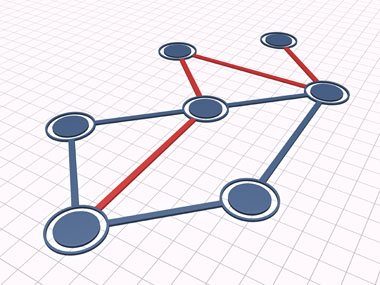Information Organization
Mind maps seem to particularly make sense for planning presentations because a good presentation does not have to be perfectly linear. If you’re presenting something with a set format, like a business plan or a research project, the format has nothing to do with a timeline — instead, you must make sure that you share specific bits of information that lead you to a particular hypothesis or sales predictions. Such pieces of information can be added to a mind map easily. When you don’t have a set format to follow, mind mapping becomes even more useful. I usually have a few concepts I know that I want to talk about when I sit down to plan a presentation. I’ll set these concepts up as offshoots of my main topic and then start adding more information. If I find that, as I add more ideas to my map, one concept no longer fits very well, I can eliminate it entirely or move the information associated with it to other points on my mind map (I use software like bubbl.us to make that part of the process much easier). I often find that just the act of setting down the ideas I already have in mind map form is enough to spark a whole list more, making the first stages of planning a presentation a question of 15 minutes — rather than the hour or so it used to take me.
From Map to Presentation
Most of my presentations wind up being in Powerpoint or similar software. I’m not the biggest fan of such an approach, but it works and my audience tends to know exactly what to expect. It’s also pretty simple for me to translate a mind map into a series of slide. Typically, my slides consist of the first layer or two of concepts that branch out from my main topic. I try very hard to limit my presentation to main topics and the images necessary to explain them. Details don’t necessarily make it on to my slides — although I do add them to my notes so that I can speak about them. It is possible to add each detail to your slides, perhaps as a bullet point, but then you’re more likely to wind up reading directly off your slides — a big presentation problem. In addition to my slides, I have my notes, which correspond to each slide. I don’t fully write out every thought that I want to share with an audience. Instead, I keep my notes short. I typically have to practice my presentation to make sure that short notes are enough to recall exactly what I want to say. If I have enough time, I like to practice to the point that I won’t even need notes — but that just doesn’t always happen, though this approach has definitely cut down on the overall amount of time I need to plan a presentation.
From Scratch Presentations
There are some situations in which a mind map doesn’t actually help me develop a presentation. If I’m putting together material on a brand new topic, they can be great. But if I’ve already spoken about a particular topic, it’s much faster to take an old presentation and adapt it to a new audience. Reusing the entire presentation doesn’t often work — even small differences in the audiences you’re talking to can necessitate some big changes in your approach to the topic — but I don’t need to start from scratch. At most, I might find myself mapping out a new section for an existing section, but even that is rare. I find that as long as the framework is there, I can typically just add material as needed. I’ve actually set out to plan a new presentation on an old subject from scratch, without success — I felt like I was missing some very crucial sections when I compared my new and old presentations.
Presentation Planning
I’ve found mind maps to be an ideal option for planning my presentations — but I know many people use other systems. I’ve seen a few people sit down at a computer and put together a Powerpoint with no pre-planning, while others do extensive research and practically write a paper before crafting a presentation. Still others seem to have a vast archive of presentations they’ve done (or ‘borrowed’) that they just adapt each time. What approaches work best for you? Can you use the same approach no matter what tpe of presentation you’re doing? I’m interested in learning what techniques really work for you — and if there’s a particular piece or software or a tool that you find useful, I’d love to hear it as well.
